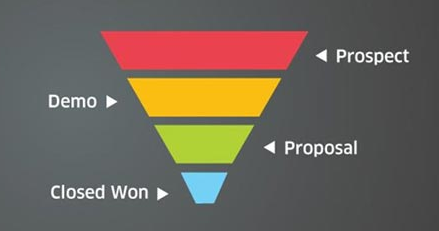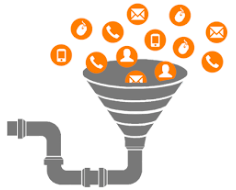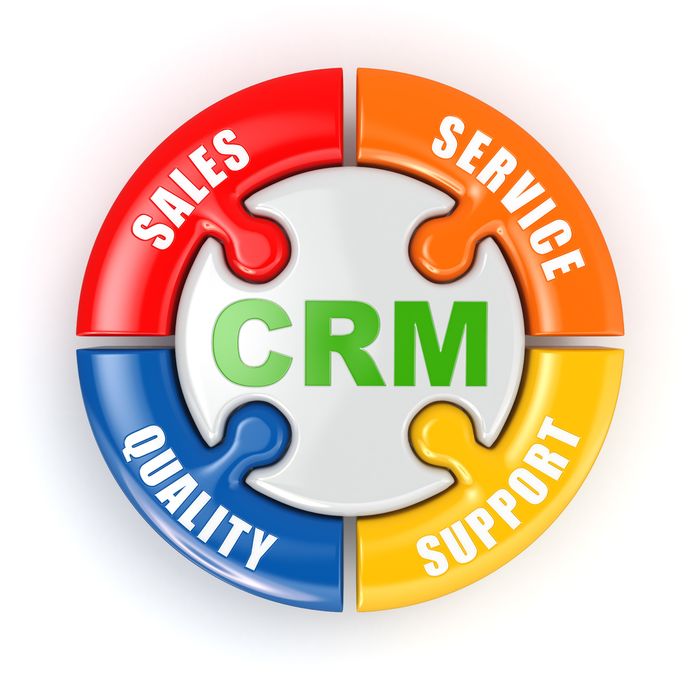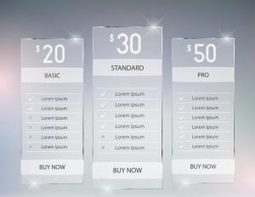Closing a big deal can be very satisfying. It’s dinner and drinks all around when the stage of the deal is changed to 100% (closed=won).
The hard work you’ve invested in prospecting, follow up, proposals, and negotiation have culminated in this highly anticipated moment. Time to sit back and relax, right?
Wrong!
In fact, for most business models, “closed-won” is not an endgame. It’s actually the first step in an ongoing customer relationship.
In this post, we’ll explore why closed-won is just the beginning. We’ll also look at technology that can help facilitate a more fruitful customer lifecycle.
Fulfillment & Delivery Must Exceed Expectations
Soon after a new customer signs on the dotted line, reality can quickly set in. By accepting the client’s business, your company stakes its stellar reputation on delivering an unbelievable (but also profitable) experience. It must walk a fine line between capacity building and providing existing clients the same personalized service that they’ve become accustomed to.
Without the right approach, the addition of new customers can actually be quite disruptive. Unfortunately, many companies are ill-prepared for the sales growth they achieve. By overemphasizing the sales funnel at the expense of downstream fulfillment and delivery, revenue growth actually detracts from the long-term value of the organization.
A more balanced approach (especially one that views sales in context of the broader customer lifecycle) can reduce the risk of overpromising while ensuring fluid on-boarding. How can your organization achieve a more “balanced” approach to sales and fulfillment? For starters, you might try fully harnessing the power of your CRM.
If you’re already an Insightly user, you may have heard that the software facilitates sales and project management. In fact, it’s even possible to convert sales opportunities to projects.

Rather than starting from scratch in a siloed project tracking system, Insightly gives your production and fulfillment teams a seamless view of each customer. The original opportunity record is automatically linked to the new project record. Emails, files, and notes can also be copied to the project. For added efficiency, Insightly activity sets can add new tasks upon project creation or conversion (for example: review customer specs, set up billing information, send a welcome packet, etc.)
By leveraging an integrated sales and fulfillment workflow, your operational team is in a much better position to effectively serve the new customer’s needs. (They’re also less likely to bug your sales reps with redundant questions!) The net result? Less busywork, expedited delivery, and another highly satisfied customer.
Measuring Satisfaction Helps You Improve Your Game
Speaking of customer satisfaction, do have a formalized process for collecting feedback?
Some companies live by the old adage, “no news is good news.” While there may be some truth to this statement, failing to ask for customer input could cause you to overlook new product or service ideas, process improvements, upsell and cross-sell opportunities, and other innovations.
Aside from waiting for customers to complain (or share their praise), what are some proactive ways to measure customer satisfaction? Here are a few simple ideas.
Design a quick survey: There are countless free and affordable survey tools online. In fact, your existing email marketing platform might natively offer polling and surveying (here’s a popular example). Regardless of the tool you select, be sure to invest adequate time and develop a simple, yet effective set of questions. Ask customers to measure various aspects of their interactions with your company. Numeric ranking questions can be particularly useful, especially when comparing the satisfaction of multiple customers. An open-ended question or two can also help you gain qualitative insights into the mind of the customer.
Create a survey distribution plan: Does it make sense to blast the entire survey to all existing customers? Or, would a batched approach make more sense? What about future customers – should you set up an autoresponder sequence that goes out a few months after an opportunity is won?
Make satisfaction data more accessible to your CRM: Insightly users have the luxury of many integrated apps. For example, the Insightly integration for the MailChimp email marketing system can display certain campaign data, making your survey results just a click or two away.
Convert Your Satisfied Customers Into Advocates
Even the largest advertising budget can pale in comparison to the value of a few vocal advocates. Customers who are willing to speak out on your behalf create untold goodwill and help other prospects understand your offering in their own terms.
As customer satisfaction starts to flow into your organization, you’ll find yourself presented with new opportunities. How can you best capitalize from glowing customer feedback? Some common approaches include:
- Testimonials for Marketing Use – Would the customer allow you to publish his or her feedback on your website or on social media?
- In-Depth Case Study – Would it be possible to interview the client as the subject for a whitepaper or case study?
- Serve as a Reference – When future customers ask for references, would this customer be willing to speak on your behalf?
- Technical Input – Would your technical or support staff gain value by picking the brains of highly satisfied customers?
- Immediate Sales Opportunities – Some customers may simply be unaware of your entire suite of solutions. A follow-up email blast or direct mail piece could generate immediate revenue opportunities with existing clients.
- Segmentation for Future Marketing – Even if there is no immediate opportunity, perhaps it would be prudent to tag satisfied customers for future reference.
As you might imagine, these ideas are only a starting point. Spend time reading and comparing customer feedback, and you’re sure to generate many other creative advocacy ideas.
Closed-Won is Important, But It’s Not Everything
Winning the initial contract is an important and necessary step in the future success of your business. However, as we’ve demonstrated in this article, achieving “closed-won” status isn’t everything – far from it, in fact.
By leveraging your CRM throughout the entire customer lifecycle (from initial inquiry through advocacy), you’re bound to yield much greater value from each customer and account.
And, most importantly, your customers will love you all the more!

Matt Keener is a marketing consultant and President of Keener Marketing Solutions, LLC. Matt specializes in content marketing and strategic planning, having helped numerous Saas (software as a service) companies and other small businesses worldwide. Read more of Matt’s work, check out his book, or connect with him on Linkedin.















 About the Author: About the Author: Gene Marks is a small business owner, technology expert, author and columnist. He writes regularly for leading US media outlets such as The Washington Post, Forbes, Inc. Magazine and Entrepreneur. He has authored five books on business management and appears regularly on Fox News, Fox Business, MSNBC and CNBC. Gene runs a ten-person CRM and technology consulting firm outside of Philadelphia. Learn more at
About the Author: About the Author: Gene Marks is a small business owner, technology expert, author and columnist. He writes regularly for leading US media outlets such as The Washington Post, Forbes, Inc. Magazine and Entrepreneur. He has authored five books on business management and appears regularly on Fox News, Fox Business, MSNBC and CNBC. Gene runs a ten-person CRM and technology consulting firm outside of Philadelphia. Learn more at 






